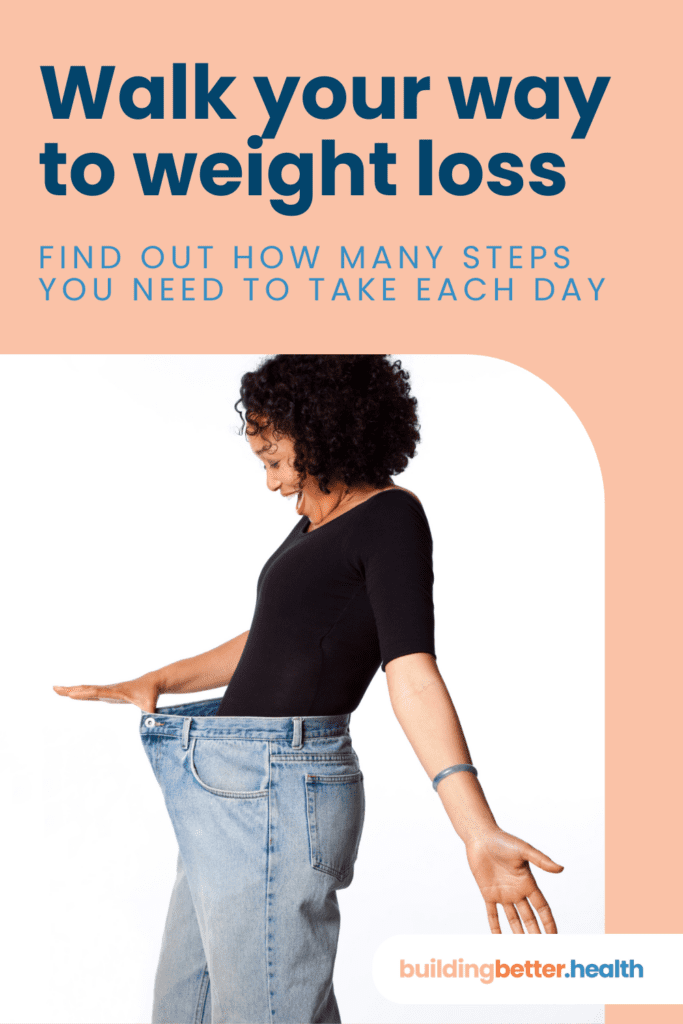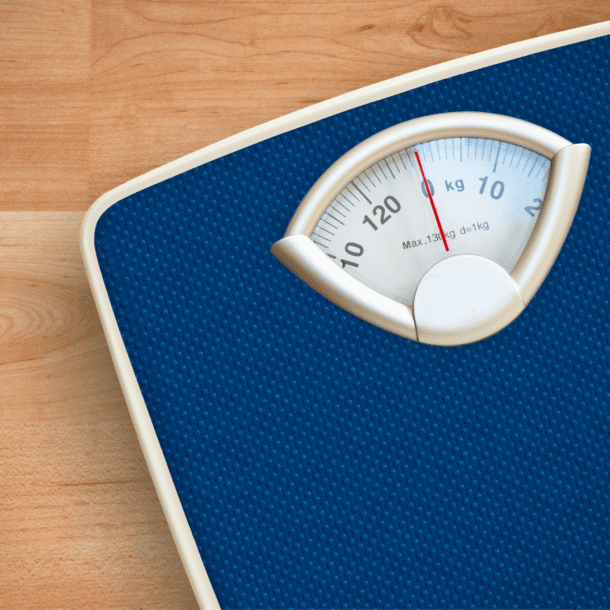
Please note: This website contains affiliate links. As an Amazon Associate, we earn from qualifying purchases at no additional cost to you.
Why do some people find it hard to lose weight, even with strict diets and tough workouts? Could the answer be as simple as walking? Walking is more than just a gentle exercise; it could be a key to losing weight.
The Mayo Clinic says walking every day can boost your fitness and health. It’s easy to start walking by parking further away or taking the stairs. The goal is often 10,000 steps a day, but what does science really say?
Research shows walking can be very beneficial. For example, obese women who walked regularly lost body fat and waist size. Walking, whether for a short or long time, fits into many lifestyles and helps reach health goals. Even if you start with small steps, it can lead to lasting weight loss.

Why Walking is an Effective Way to Lose Weight
Walking is a powerful exercise for weight management. It’s easy to add to your daily routine. It helps with weight loss and boosts your health. Wondering how many steps a day to lose weight? Let’s explore the benefits walking offers.
Health Benefits of Walking
Setting a steps goal for weight loss does more than just help you lose weight. It also improves your health. Regular walking can:
- Lower the risk of chronic diseases like coronary artery disease, diabetes, and osteoporosis.
- Reduce cancer risks, particularly colon and kidney cancers.
- Enhance mental health by alleviating depression and anxiety.
- Manage arthritis symptoms by decreasing pain and stiffness.
A 2021 study found that walking or running burns about 107 calories per mile. This shows the calorie-burning potential of these activities.
Impact on Metabolism and Fat Burning
Understanding weight loss steps per day is crucial for effective weight management. Regular walking can:
- Promote the reduction of visceral fat, effectively tackling belly fat.
- Help maintain lean muscle, crucial for preventing the decline in metabolic rate usually associated with weight loss.
- Boost caloric burn when walking briskly.
The Centers for Disease Control recommend at least 150 minutes of moderate-intensity aerobic exercise per week. Walking meets this goal easily. Studies show walking 8,000 to 9,000 steps a day helps manage hypertension and diabetes. Exercise routines, including walking three times a week for 30–60 minutes, also help reduce fat and improve mood.
To keep up with your weight loss journey, set a steps goal you can stick to. Whether it’s 10,000 steps a day or smaller sessions, consistency is key. Tools like pedometers can track your progress and motivate you to increase your daily steps. This promotes long-term health benefits and effective weight management.
Getting Started: Setting a Walking Goal for Weight Loss
Starting a walking journey for weight loss begins with setting goals. These goals should be realistic and achievable. Knowing your current fitness level is the first step to finding where to start.
Assessing Your Current Fitness Level
Before starting, check your current fitness level. See how long you can walk without getting tired. Walking at a moderate pace of 3.5 miles per hour is best.
A 154-pound person burns 280 calories per hour at this pace. Walking faster, at 4.5 miles per hour, can burn up to 460 calories an hour.
Talk to your doctor, especially if you’re older or have health issues. They can give you advice and help set safe goals.
Choosing the Right Walking Shoes
Finding the right walking shoes is important. Good shoes support your feet and prevent injuries. Look for shoes that are cushioned, stable, and fit well.
Planning Your Walking Routine
With the right shoes, plan your walks. The U.S. Department of Health and Human Services suggests 300 minutes of moderate exercise weekly. This can be 60-minute walks, five days a week.
Or, start with 30-minute walks, five days a week. As you get fitter, increase the time and intensity.
Beginners should start with 20-minute walks, three to four times a week. Gradually increase the time. Wear comfortable clothes, stay hydrated, and use sunscreen for a better experience.
Consistency is key to reaching your walking goal. Use fitness trackers or apps to track your progress. A balanced diet with your walks will help you lose weight more effectively.
How Many Steps a Day to Lose Weight
To lose weight, knowing how many steps daily is key. Obesity rates have jumped from under 14% in the 1980s to over 40% today. Walking 10,000 steps a day, or about 5 miles, is a good goal for many.
Studies from Kennesaw State University show that step goals vary by body type and weight. For example, a 175-pound man with 25% body fat should aim for 10,900 steps. A 220-pound man with 20% body fat needs about 15,300 steps. A 155-pound woman with 30% body fat should aim for 11,450 steps to lose weight.
Most adults in the U.S. only take about 4,774 steps a day. This is far from the 8,000-10,000 steps recommended for fitness. Taking less than 5,000 steps a day is seen as sedentary. But, taking more than 7,500 steps a day can help with weight loss.
Adding more steps to your day can be easy. Try taking stairs, parking further away, or walking to places. This can help you reach your step goals. Regular physical activity, especially over 7,500 steps, is linked to more weight loss.
While aiming for 10,000 steps a day is good for health, don’t forget about nutrition. Eating right is just as important as increasing your steps. With commitment and small changes, you can lose weight successfully and sustainably.
Tracking Your Progress: Keeping a Step Count to Lose Weight
Tracking your daily steps can help you reach your weight loss goals. It shows your progress and keeps you motivated. Use fitness trackers, pedometers, or apps to track your steps.

Using Fitness Trackers and Pedometers
Fitness trackers and pedometers are great for tracking steps. Devices like Fitbit and Garmin, or your phone’s health app, have useful features. They help you see how many steps you take each day.
Popular tools for tracking steps include:
- Standalone pedometers
- Smartphone health apps like iPhone’s Health app and Android’s Google Fit
- Wrist-worn fitness trackers such as Fitbit
These tools are easy to use and accurate. They help you see how activities like shopping or walking the dog help you reach your goals. Choose a method that fits your lifestyle and keeps you motivated.
Recording Your Daily Steps and Milestones
Recording your daily steps keeps you focused and motivated. Start with a goal like 8,000 steps a day. Then, increase it by 500 to 1,000 steps each week. Celebrate your progress to stay motivated.
Here’s a weekly walking plan for weight loss:
| Week | Daily Steps | Additional Activity |
|---|---|---|
| Week 1 | 8,000 steps | Basic walking |
| Week 2 | 10,000 steps | Basic walking |
| Week 3 | 12,000 steps | 30 minutes of brisk walking |
| Week 4 | 15,000 steps | 45 minutes of brisk walking |
By tracking your steps and recording your progress, you make your fitness journey more enjoyable. Choose a goal and method that fit your fitness level and lifestyle for the best results.
Increasing Your Daily Steps for Weight Loss
Increasing your daily steps is a great way to lose weight. But how many steps should you aim for? Try to add 1,000 extra steps every two weeks. Aim for 10,000 steps a day. Walking briskly after meals can also help control blood sugar.
Walking on hills, stairs, or inclines can burn more calories. Make walking a part of your daily routine, like when you do errands or walk your pet. Walking with friends or joining a club can make it more fun and help you reach your goals.
Here are some stats to help you set your step goals:
| Statistic | Details |
|---|---|
| Average American’s Daily Steps | 3,000 to 4,000 (1.5 to 2 miles) |
| Recommended Step Goal | 10,000 steps per day |
| Incremental Increase | Add 1,000 steps every two weeks |
| Moderate-Intensity Exercise Recommendation | 150 minutes per week (such as brisk walking) |
| Additional Benefits | Reduced risk of cancer, heart disease, and early death |
| Impact on Obesity | 11,000 steps/day reduce obesity risk by 50% |
| Brisk Walking Pace | 112 steps/minute for 30 minutes decreases dementia risk by 62% |
The U.S. Department of Health and Human Services suggests 150 minutes of moderate exercise weekly. This can be brisk walking. Adding movement to your daily life can help you stay healthy.
The Role of Intensity: Power Walking and Intervals
Intensity is key to getting the most out of your walks, especially for losing weight. Power walking and intervals can greatly increase calorie burn and fitness. Learning how to use these techniques can really help with weight loss.
Benefits of Brisk Walking
Brisk walking means moving at 3 to 4 mph or faster. It raises your heart rate and breathing, offering many health benefits. Every 0.6 mph increase lowers type 2 diabetes risk by 9%. It also helps with weight and improves body shape by burning more calories than slow walking.
Power walking, a type of brisk walking, works your whole body. It tones muscles like glutes, shoulders, and upper back. It also boosts heart health.

Walking at any pace burns calories and improves heart health. But brisk walking does more. It burns more energy and calories, helping you lose weight.
Incorporating Walking Intervals
Interval walking for weight loss includes short, fast walks. It increases fat burn and fitness. A typical workout starts with a warm-up, then speed and moderate intervals. It ends with a cooldown.
For better results, try shorter recovery times, longer fast walks, or walking uphill. You can also jog faster and longer. Walking intervals regularly can lead to great weight loss and fitness gains.
- Warm-Up: Start slow to prepare your muscles.
- Speed Intervals: Incorporate short bursts of faster walking.
- Moderate Pace Intervals: Return to a comfortable, sustainable pace.
- Repeat: Complete several sets of speed and moderate intervals.
- Cooldown: Gradually reduce your pace to end your workout safely.
Interval power walking boosts calorie burn and makes workouts more fun and effective. Adding these high-intensity parts to your routine can help you reach your weight loss goals faster.
Enhancing Calorie Burn: Walking Uphill and Adding Weight
Walking uphill can help you burn more calories. Adding a weighted vest can increase this burn even more. Let’s explore how these methods can help you reach your weight loss goals safely and effectively.
Walking on Inclines
Walking uphill burns more calories than walking on flat ground. For example, walking uphill burns 48 calories per mile more than walking on flat ground. This is a 60% increase in calorie burn.
For every 1% of uphill grade, a 150-pound person burns about 10 more calories per mile. This means an increase of about 12%. At a 10% grade, a person burns more than twice as many calories per mile as they would on flat ground.
The 12-3-30 treadmill workout became popular in 2019. It includes a treadmill incline of 12, speed of 3 miles per hour, and a duration of 30 minutes. Influencer Lauren Giraldo said this workout helped her lose 30 pounds.
Giraldo does this workout about five times a week. Walking burns about 125 calories in 30 minutes for a 150-pound person. But with the added incline, the calorie burn is much higher.
The U.S. Department of Health and Human Services recommends 150 to 300 minutes of moderate-intensity aerobic exercise per week. Regular incline walking can help you meet these guidelines and burn calories for weight loss. Start gradually with the incline and include recovery days or alternate activities. Adjust your walking routine to your fitness level and goals for sustained and safe weight loss.
| Scenario | Calories Burned per Mile | Percentage Increase |
|---|---|---|
| Flat Ground | 80 | N/A |
| 1% Incline | 90 | 12% |
| 10% Incline | 160 | 100% |
Using a Weighted Vest Safely
Using a weighted vest can add a challenge to your walks and increase calorie burn. A heavier body or added weight means more energy expended. However, it’s important to use weighted vests safely to avoid strain or injury.
Start with lighter weights and gradually increase as your body adapts. Make sure the vest fits snugly but allows for unrestricted movement. Maintain proper walking form and avoid overloading the vest to prevent undue stress on your joints and muscles. Recovery days and alternating activities are essential to prevent overuse injuries, ensuring a safe and effective workout routine.
Incorporating Resistance Training During Walks
Adding resistance training to your walks can make your exercise routine better. It boosts muscle tone and burns more calories. This mix helps with weight loss and increases endurance.
Simple Exercises to Do While Walking
Here are some easy exercises to add to your walks:
- Squats: Stop every few blocks for squats to work your lower body.
- Lunges: Do walking lunges to strengthen your glutes and thighs.
- Pushups: Use park benches for incline pushups to work your upper body.
- Tricep Dips: Find sturdy surfaces for tricep dips to tone your arms.
Benefits of Mixing Walking with Strength Training
Walking with strength training has many benefits. Short exercise breaks can raise your heart rate, improving heart health. It also strengthens muscles and prevents injuries.
Start with three blocks of exercises, doing eight to ten reps each. As you get fitter, do more reps and exercises.
Here’s a table showing how walking with strength training is effective:
| Exercise | Calories Burned (30 mins) | Muscle Groups Targeted |
|---|---|---|
| Walking Alone | 100-400 | Legs, Core |
| Walking with Squats | 150-450 | Legs, Glutes, Core |
| Walking with Lunges | 160-460 | Legs, Glutes, Core |
| Walking with Pushups | 170-470 | Chest, Arms, Shoulders, Core |
| Walking with Tricep Dips | 165-465 | Arms, Shoulders, Core |
Walking with strength training is more than just losing weight. It makes you stronger and healthier. Adding these exercises to your walks boosts your workout’s benefits. So, get ready to walk your way to a better body!
Staying Motivated: Tips to Keep Walking Regularly
Keeping up with your walking routine can be tough. But, using the right walking motivation strategies can make it easier. By trying different methods, you can keep walking regularly. This will help your health and happiness in the long run.
Setting Realistic and Achievable Goals
It’s key to set goals that you can really do. Start with small goals, like a 10-minute walk. Then, you can walk more and do harder walks. Keeping track of your walks can also motivate you as you see your progress.
“The Department of Health and Human Services recommends at least 150 minutes of moderate aerobic activity or 75 minutes of vigorous aerobic activity per week for adults,” a standard easily attainable through regular walking routines.
Finding a Walking Buddy or Club
Walking with friends can make it more fun. Join a walking club or find a walking buddy. This adds fun and accountability to your walks.
Rewarding Yourself for Milestones
Rewarding yourself for reaching goals can keep you going. Celebrate big milestones, like 1,000 steps or a week of walking. Treat yourself to something nice. This positive feedback makes it easier to keep walking.
Using these walking motivation strategies will help you keep walking. Set goals, find walking friends, and celebrate your wins. This way, walking will be fun and a big part of your fitness routine.
Conclusion
Walking is a simple yet effective way to start losing weight. By aiming for 10,000 steps a day, you can make big progress. Studies show it’s great for your health, lowering risks of dementia and heart disease.
A study found that walking 9,822 steps a day helped people lose weight. They also did 3,482 steps at a faster pace. This shows how important it is to keep walking regularly. Adding hills, wearing a weighted vest, or doing resistance exercises can help burn more calories.
Staying motivated is crucial. Use apps to track your steps, set achievable goals, and find a walking partner. These steps can lead to a healthier, more energetic life.

FAQ
How many steps a day should I aim for to lose weight?
What are the health benefits of walking daily?
How does walking impact metabolism and fat burning?
How should I set my walking goal for weight loss?
How can I track my daily steps for weight loss?
What are some effective ways to increase my daily step count for weight loss?
What is power walking and how does it aid in weight loss?
How can walking uphill or using a weighted vest enhance calorie burn?
Can I combine resistance training with my walking routine?
How can I stay motivated to walk regularly?
Please note: This website contains affiliate links. As an Amazon Associate, we earn from qualifying purchases at no additional cost to you.










